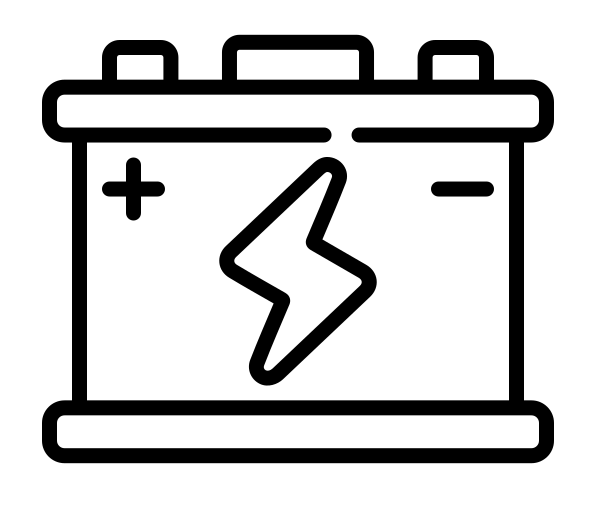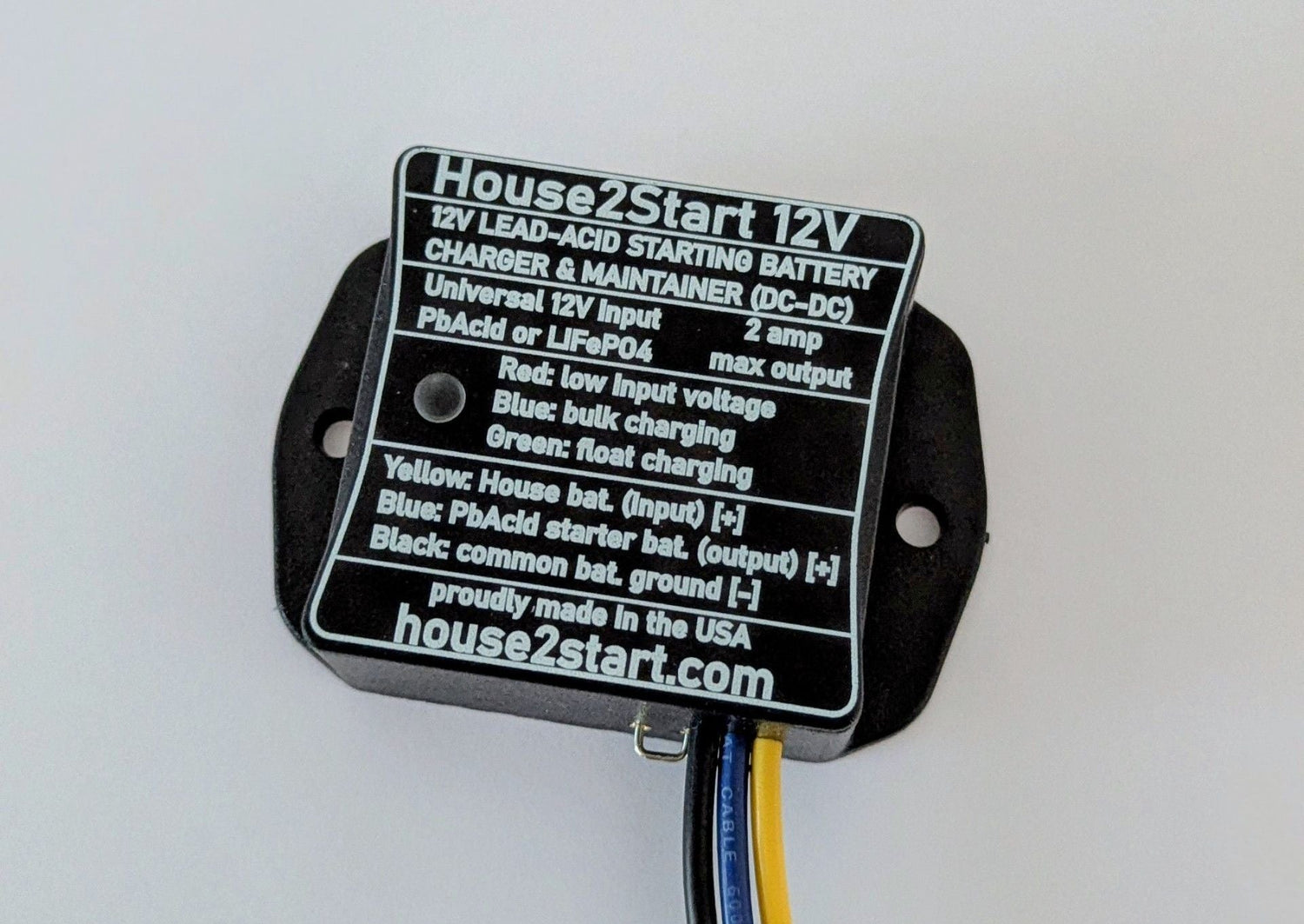
2️⃣ Common RV Starter Battery Maintenance Solutions (and Their Pitfalls)
Share
This article is part of our 3-part RV Starter Battery Maintenance Series:
1️⃣ Why Your RV Starter Battery Dies in Storage
2️⃣ Common RV Starter Battery Maintenance Solutions
3️⃣ House2Start: The Intelligent Solution for Worry-Free RV Battery Maintenance
Introduction: Navigating the Options for RV Battery Health
In Part 1, we explored why RV starter batteries fail — from sulfation and temperature extremes to parasitic drain. Now we’ll review the most common methods RV owners use to maintain their starter batteries during storage.
Each approach offers certain benefits, but as RV systems evolve with mixed battery chemistries and more onboard electronics, these solutions can have serious limitations.
1. AC-Powered Battery Chargers / Maintainers
(Examples: CTEK, NOCO Genius, BatteryMINDer)
These devices convert household AC power into DC power to charge and maintain the RV starter battery using a multi-stage charging algorithm:
- Bulk Charge: Quickly restores ~75–80% of capacity.
- Absorption: Holds ~14.4V while reducing current to fully saturate plates.
- Float: Maintains ~13.5V to prevent self-discharge.
- (Some models) Equalization: Controlled overcharge to reverse sulfation in lead-acid batteries.
Advantages:
- Maximizes battery life with proper voltage control.
- Can recover deeply discharged batteries (even 0V in “Force Mode”).
- Intelligent safety features: thermal compensation, spark-proof, reverse polarity protection.
Limitations:
- Requires constant access to AC power.
- Typically not permanently installed — must be plugged in and disconnected manually
💡 Best For: RVs stored at home or in facilities with convenient outlet access.
2. Battery Disconnect Switch
A simple, inexpensive way to cut off the RV’s electrical system from the starter battery — stopping parasitic drain.
Advantages:
- Low cost and easy to install.
- Enhances safety during maintenance.
- Stops parasitic loads.
Limitations:
- Does not maintain voltage — batteries still self-discharge over time.
- Risk of sulfation if stored for months without active charging.
- Requires manual engagement/disengagement.
⚠️ Warning: Disconnecting alone won’t prevent long-term battery damage from self-discharge.
3. Voltage followers
(Examples: Trik-L-Start, Amp-L-Start, Xantrex Echo)
Voltage followers “steal” a small amount of current from the house battery charging source to keep the starter battery topped off. The starter battery is charged with the same profile as the house battery.
Advantages:
- Permanently installed.
- Works with shore & solar-charged house batteries.
- Requires no manual connection/disconnection.
Critical Limitation — Mixed Battery Chemistries:
If your house battery is lithium and your starter battery is lead-acid, a voltage follower may charge the starter battery at too high voltage. This is especially true in high ambient temperature, as lithium battery charging does not use temperature compensation. This can cause overcharging, gassing, water loss, and plate corrosion in lead-acid batteries.
The risk is especially high if the lithium battery stays near full charge for long periods, like in storage.
❌ Not Recommended for lithium house battery → lead-acid starter battery systems.
Conclusion: The Need for a Smarter Solution
AC chargers, disconnect switches, and voltage followers all have gaps:
- AC chargers: Need constant outlet access.
- Disconnect switches: Don’t prevent self-discharge.
- Voltage followers: Can damage batteries in mixed-chemistry setups.
In Part 3, we’ll introduce House2Start — a purpose-built, intelligent DC-to-DC charger that eliminates these limitations and provides safe, “set-and-forget” starter battery maintenance in any RV system.
Read Part 3: The Intelligent Solution for Worry-Free RV Battery Maintenance →

